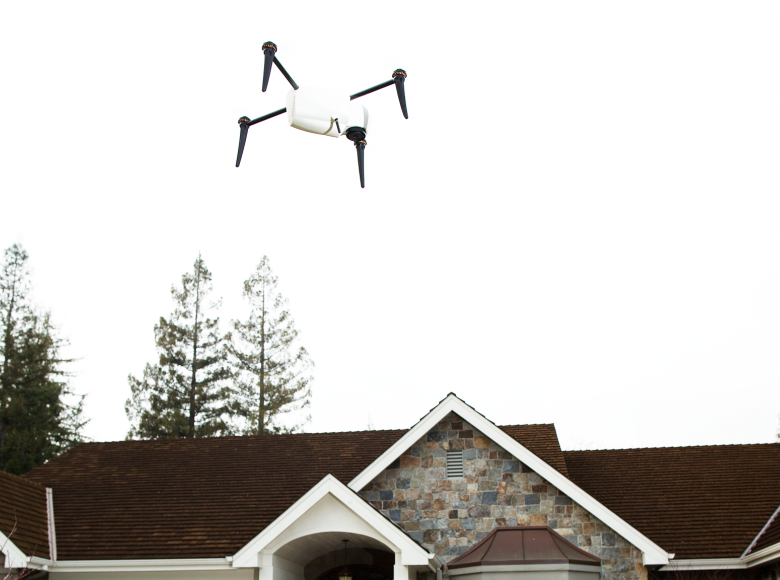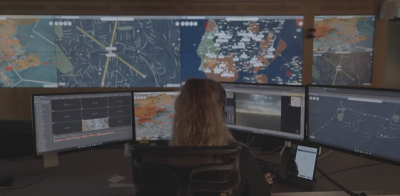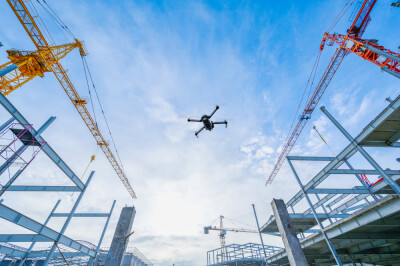April 26, 2017
How is Drone Data Improving the Policyholder Experience and Carrier Operations in P&C?
The many ways in which drones can make things faster, cheaper or safer for professionals is a topic we’ve explored across various industries, but the potential impact of the technology in the property & casualty insurance industry is especially notable. For anyone working in P&C, drones provide users with multiple means to reduce risk, and the increases in efficiency the tools create can be directly and indirectly seen on the bottom line.

Garrett Smith
Garrett Smith, Kespry's Director of Business Development, is set to discuss those details during a live webinar,
How Drones, Data & AI are Revolutionizing the P&C Industry. He’ll discuss where and how these efficiencies can be created, what kind of value proposition drone technology represents and plenty more.
We caught up with Garrett to capture a few more details around the info he’s set to talk through during the webinar. Attendees can submit their own questions before and during the webinar. There is no fee to attend, and you can
register here.
Jeremiah Karpowicz: What are a few of the specific ways you’ve been able to see drones make a difference in the property and casualty insurance industries?Garrett Smith: We’ve seen improvements in the average number of roof inspections adjusters are able to handle per day. This means that staff adjusters are able to address a greater proportion of roof claims, and faster. This reduces cycle time (the time between a policyholder's first notice of loss and claim settlement), which leads inevitably to greater policyholder retention and reduced portfolio churn.
We’ve also seen a mitigation of roof-related injuries for insurance adjusters, with a corresponding reduction in the risk exposure experienced in field operations. This means P&C carriers see reductions in their workers compensation premiums over time, with safer workforces.
Lastly, we’ve identified a reduced spend on loss adjustment expenses (LAE), since carriers are less reliant on contractors to handle steep and tall inspection work. This is because carriers' field staff are able deploy drones instead of spending money on relatively expensive contracted services.
Are there any specific misconceptions around how drones can and should be used that you’ll address during this presentation? There are various misconceptions about safety and regulatory issues surrounding automated solutions (versus manually-piloted UAS). Sophisticated enterprise insurance customers do not just want drones; in the end, they will be focused on what can be done with the data, as the image capture and UAS used to capture that data become ever-more commoditized. Hence, it is about the data and how to extract business insights and decision-making information from that data. AI (automation and analytics), APIs (integrations with existing systems), and applications are the way of the future.
 What type of person is going to get the most out of attending this webinar? Will there be any specific takeaways for them from it?
What type of person is going to get the most out of attending this webinar? Will there be any specific takeaways for them from it? The specific takeaways will be how drone data is improving the policyholder experience and carrier operations, with an overview of use cases such as hail detection and roof inspection. Questions that should be asked when considering an aerial data solution will also be shared.
In terms of the type of person that’s going to get the most out of the webinar, there are a number of them:
- Property & Casualty Insurance Carriers, Third Party Administrators (TPAs), and companies servicing the industry through contracted services looking to build out aerial data capabilities.
- From the Carriers: Chief Claims Officers, Directors of Claims Innovation, VP Claims Operations, Directors of Catastrophe (CAT) teams
- From the TPAs/Independent Adjuster/Contractors: Innovation Directors, COOs, CEOs, Carrier Relationship Managers
Will a better understanding around how drones can be used in the P&C industry in the present help open up opportunities for users related to specific value propositions in the future? Yes! This is a rapidly-evolving industry, with ever-improving options for entities looking to build aerial data strategies for their companies. Understanding the current (very exciting) state of the industry will inform decisions to innovate and operationalize in the coming year or two. Those who do not stay up on this technology now will be behind the power curve even by the end of this year.


 What type of person is going to get the most out of attending this webinar? Will there be any specific takeaways for them from it? The specific takeaways will be how drone data is improving the policyholder experience and carrier operations, with an overview of use cases such as hail detection and roof inspection. Questions that should be asked when considering an aerial data solution will also be shared.In terms of the type of person that’s going to get the most out of the webinar, there are a number of them:
What type of person is going to get the most out of attending this webinar? Will there be any specific takeaways for them from it? The specific takeaways will be how drone data is improving the policyholder experience and carrier operations, with an overview of use cases such as hail detection and roof inspection. Questions that should be asked when considering an aerial data solution will also be shared.In terms of the type of person that’s going to get the most out of the webinar, there are a number of them:
















Comments